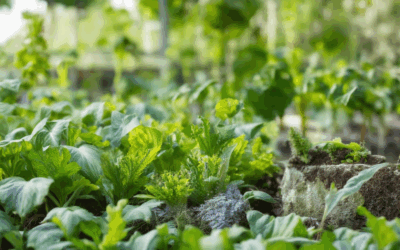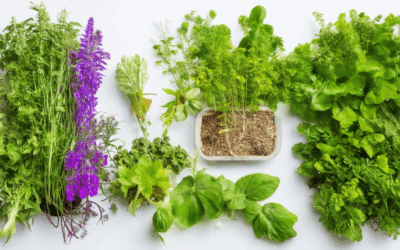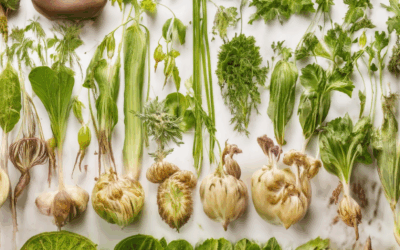Exploring the intricate world of sustainable gardening, permaculture design offers a unique approach to creating thriving, self-sustaining ecosystems right in your own backyard. For those new to the concept, permaculture design basics provide a foundational framework for understanding how to mimic natural processes to maximize productivity and environmental harmony. This comprehensive guide delves into the core principles, practical techniques, and real-world applications that make permaculture an invaluable tool for modern gardeners. From understanding the 12 principles of permaculture to learning how to design a space that mirrors a forest ecosystem, this article walks you through everything you need to know to get started. Whether you’re looking to integrate permaculture design principles into an urban setting or create a more natural landscape, the insights shared here will empower you to craft a garden that thrives on its own terms.
Key Takeaways
- Assess Your Property: Evaluate natural features, microclimates, water sources, and barriers to create an effective permaculture design.
- Design Layers: Implement a structured approach with canopy, sub-canopy, herbaceous, ground cover, and root zones for a balanced, productive system.
- Integrate Animals and Fungi: Incorporate chickens, ducks, bees, and mushrooms to enhance biodiversity and benefits like manure and pollination.
- Water Management: Use swales, berms, rainwater harvesting, and drip irrigation to conserve water and reduce erosion.
- Edible Landscaping: Maximize space by planting fruit trees, vegetables, herbs, and nitrogen-fixing plants for nutritional yield.
- Organic Techniques: Employ composting, mulching, and crop rotation to maintain healthy, fertile soil naturally.
- Biodiversity: Promote ecosystem health by planting diverse species, practicing companion planting, and attracting birds for natural pest control.
- Monitor and Maintain: Regularly inspect and adjust your system for optimal performance and sustainability.
- Whole System Design: Customize your design to align with your lifestyle, using perennials and adapting to local conditions for long-term success.
- Hügelkultur Benefits: Improve soil structure, nutrient retention, weed control, and plant productivity with this sustainable gardening technique.
- Backyard Forest: Transform your space by selecting appropriate trees, layering plants, adding lighting, water features, and wildlife attractions for a serene retreat.
Principle 7 of Permaculture
Permaculture’s seventh principle focuses on creating closed-loop systems that minimize waste and maximize the use of renewable resources. This principle emphasizes the importance of designing sustainable systems that mimic natural processes, ensuring that resources are used efficiently and waste is minimized. By adopting practices like composting, rainwater harvesting, and recycling materials, individuals can contribute to a more harmonious and eco-friendly lifestyle. This principle underscores the need for a holistic approach to sustainability, extending beyond gardens to daily living practices.
Permaculture Design Principles
Permaculture is a sustainable land management system that mimics the patterns found in nature. Here are the core principles that guide its design:
- Ethics of Permanence and Sustainability: Permaculture emphasizes long-term sustainability, resource conservation, and working in harmony with nature.
- Patterns and Edge Effects: Natural systems exhibit distinct patterns, and edges (where two different environments meet) are critical for biodiversity and function.
- Soil Health and Fertility: Healthy soil is the foundation of any successful permaculture system. Techniques include composting, cover cropping, and crop rotation.
- Water Management: Efficient water capture, storage, and distribution are key. Practices include rainwater harvesting, swales, and drip irrigation.
- Polyculture and Guilding: Growing multiple plants together (polyculture) creates a self-sustaining ecosystem. Guilds combine crops, animals, and fungi to maximize productivity and biodiversity.
- Succession and Adaptation: Understanding the natural succession of ecosystems allows for more resilient and diverse designs. Adaptations are made based on local conditions and climate.
- Cultural and Spiritual Dimensions: Permaculture also involves cultural practices, storytelling, and spiritual connections to the land, fostering a deeper sense of stewardship.
These principles guide the creation of thriving, regenerative ecosystems that benefit people and the planet. By applying them thoughtfully, we can build a more sustainable and resilient future.
For more resources and guides on implementing these principles, visit our gardening guides section.
Weaknesses of Permaculture
- Initial Setup and Maintenance Effort: Establishing a permaculture system requires significant upfront effort to design, install, and maintain the necessary structures and plants. This can be overwhelming for beginners.
- Learning Curve: Mastering permaculture techniques, such as companion planting and soil health management, takes time and practice. Newcomers may struggle initially to understand the principles fully.
- Slow Results: Permaculture systems often take years to reach their full potential. This can be discouraging for those seeking quick fixes or visible outcomes.
- Crop Specificity: Not all plants thrive in a permaculture system, and success can depend heavily on the local climate, soil type, and growing season.
- Resource Dependence: While permaculture aims to reduce external inputs, certain aspects like composting and mulching still require resources, though these are generally more sustainable than chemical alternatives.
- Overproduction Risk: A successful permaculture system can yield more produce than a typical garden, potentially leading to oversupply without a ready market, especially if not integrated with a distribution network.
How to Create a Permaculture Design
To design a successful permaculture system, follow these organized steps:
Step 1: Assess Your Property
- Observe the natural features of your land, including topography, soil types, and existing vegetation.
- Identify microclimes and areas of full sun, partial shade, and deep shade.
- Map out water sources, such as rainfall, wells, or streams.
- Look for natural barriers like fences, walls, or existing structures.
Step 2: Design the Layout
- Create layers in your design: canopy (trees), sub-canopy (shrubs), herbaceous (plants), ground cover (clover, grasses), and root zone (nitrogen-fixing plants like legumes).
- Integrate animals such as chickens, ducks, or bees into your system for additional benefits like manure and pollination.
- Incorporate fungi by planting mushroom patches in shaded areas.
Step 3: Implement Water Management
- Install swales or berms to capture and store rainwater.
- Set up rainwater harvesting systems or drip irrigation for efficient water delivery.
- Consider contouring your land to slow water runoff and prevent erosion.
Step 4: Plan for Edible Landscaping
- Plant fruit trees, berries, vegetables, and herbs in strategic locations.
- Use edible landscaping around pathways and structures to maximize space.
- Include nitrogen-fixing plants to enrich the soil naturally.
Step 5: Practice Organic Techniques
- Compost organic waste to fertilize your soil.
- Mulch heavily to retain moisture and suppress weeds.
- Practice crop rotation to maintain soil health and prevent pests.
Step 6: Incorporate Biodiversity
- Plant a variety of species to attract pollinators and beneficial insects.
- Use companion planting to deter pests and improve plant health.
- Introduce birds and small animals to your system for natural pest control.
Step 7: Monitor and Maintain
- Regularly observe your system to identify areas needing adjustment.
- Apply natural pesticides or predators to control pests organically.
- Divide or move plants as needed to maintain balance and productivity.
Step 8: Consider the Whole System
- Design your permaculture system to work with your lifestyle and needs.
- Plan for long-term sustainability by incorporating perennials and self-renewing resources.
- Educate yourself on local climate conditions to tailor your design accordingly.
By following these steps, you can create a thriving permaculture system that enhances your environment while providing food, medicine, and beauty for years to come. Remember to consult with local experts or join community groups to gain further insights and tailored advice for your specific location.
For more detailed guidance, explore our Permaculture Design Guide and learn how to optimize your land for maximum efficiency and productivity.
What is a Hügelkultur Bed?
A Hügelkultur bed, pronounced “hoo-gul-kul-tur,” is a sustainable gardening technique originating from Germany. This method involves creating elevated, mound-like beds filled with organic matter, wood, and topsoil to enhance plant growth and promote biodiversity. The practice has been used for centuries in Europe, particularly in regions with challenging soil conditions.
How to Build a Hügelkultur Bed
- Select a Location : Choose a spot in your garden that receives full sun to partial shade, depending on the plants you wish to grow.
- Prepare the Base : Dig a hole approximately 2 feet deep and 10 feet wide to create space for the mound.
- Add Organic Material : Fill the hole with a mix of rotted wood (such as chestnut or oak), compost, manure, and leaf mold. The wood acts as a framework to hold the soil together, while the organic materials provide nutrients.
- Layer Topsoil : Cover the organic layer with rich topsoil, ensuring it is well-packed to prevent settling.
- Form the Mound : Shape the earth into a gentle slope around the base, leaving the center slightly lower than the edges to allow water drainage.
Benefits of Hügelkultur Beds
- Improved Soil Structure : The wood helps aerate the soil and increase water infiltration.
- Enhanced Nutrient Retention : The organic material enriches the soil, providing essential nutrients for plants.
- Reduced Weeds : The raised structure makes it easier to manage weeds and keeps the area tidy.
- Higher Yield : Plants often thrive in Hügelkultur beds due to better drainage and nutrient availability.
Explore Related Articles
For more details on implementing Hügelkultur beds and other sustainable gardening techniques, visit our comprehensive guides:
- How to Create a Sustainable Garden
- Benefits of Composting
If you’re interested in learning more about alternative gardening methods, we recommend exploring these resources:
- GardenSphere – A leading provider of gardening tools and resources.
- BioCharHub – Experts in organic gardening solutions.
How to Make Your Backyard Feel Like a Forest
To transform your backyard into a lush, forest-like environment, follow these organized steps:
- Select Appropriate Trees : Begin by choosing fast-growing trees like cedar and oak for quick coverage. These trees adapt well to various climates and provide a sturdy framework. Incorporate slower-growing fruit trees such as pecan, persimmon, and walnut to create a more established forest feel.
- Layer Plants Strategically : Create depth by layering plants. Start with taller trees at the back of your yard, followed by medium-sized shrubs and bushes in the middle, and smaller plants closer to your home. This mimics the layered structure of a natural forest.
- Utilize Lighting : Enhance the inviting atmosphere with string lights or lanterns hung from trees. Consider adding pathway lights to guide movement and highlight beautiful features of your garden.
- Install Water Features : Introduce a small pond with a fountain to attract wildlife and create a serene environment. Remember to factor in maintenance needs to keep it healthy.
- Attract Wildlife : Place bird feeders or birdhouses to welcome feathered friends. Plant native plants and shrubs to provide habitat and food for local wildlife, supporting biodiversity.
- Apply Mulch and Compost : Use organic mulch to retain moisture, suppress weeds, and enrich the soil. Incorporate compost to boost soil fertility and promote plant health.
- Consider Seasonal Changes : Design your landscape to change with the seasons. Choose plants that bloom at different times to ensure year-round interest and beauty.
- Add Personal Touches : Enhance your space with DIY touches like carved wooden benches or decorative elements like toad houses, blending nature with artistic flair.
By focusing on these key areas, your backyard can become a haven that mirrors the tranquility of a forest, offering a retreat-like escape close to home.








0 Comments